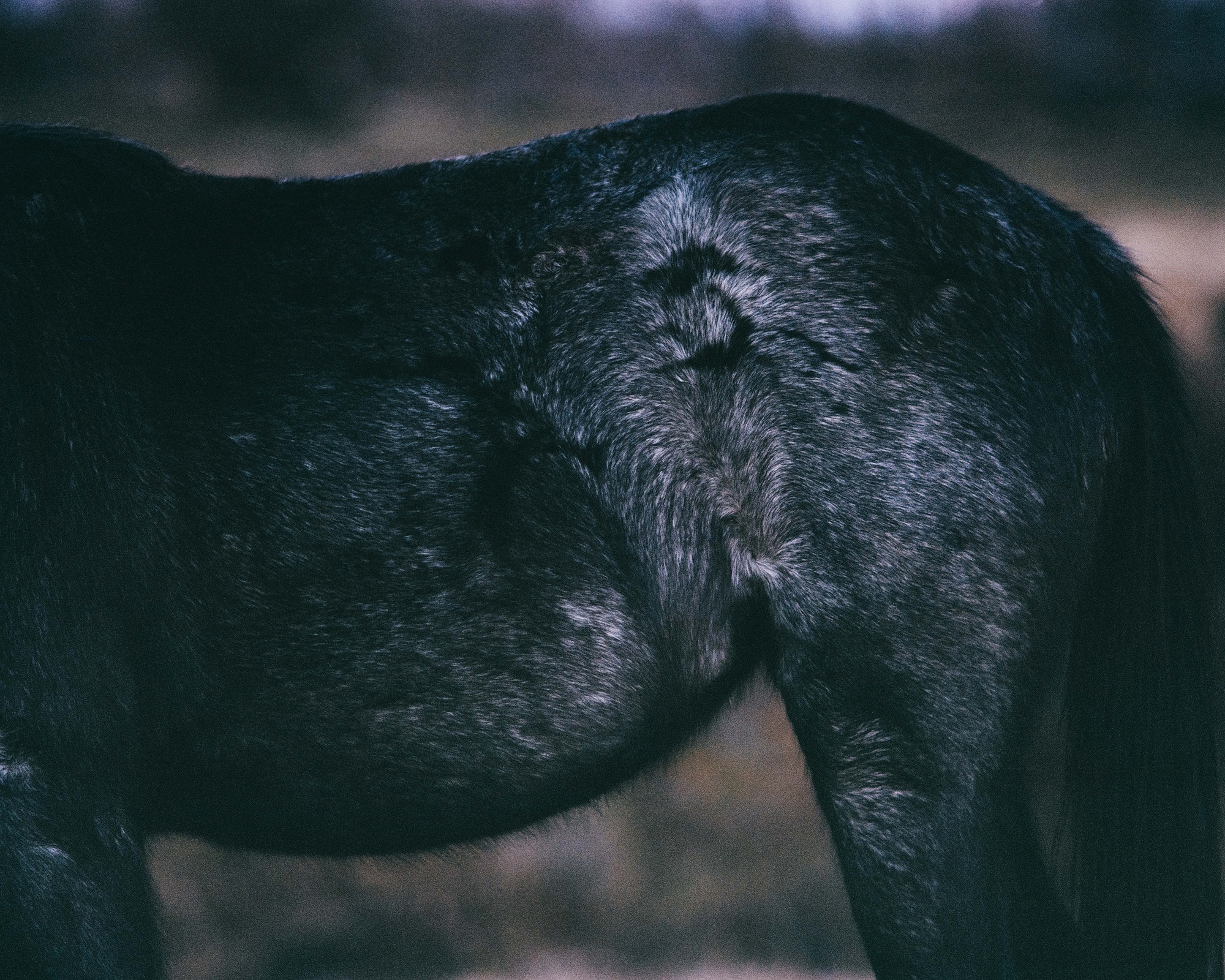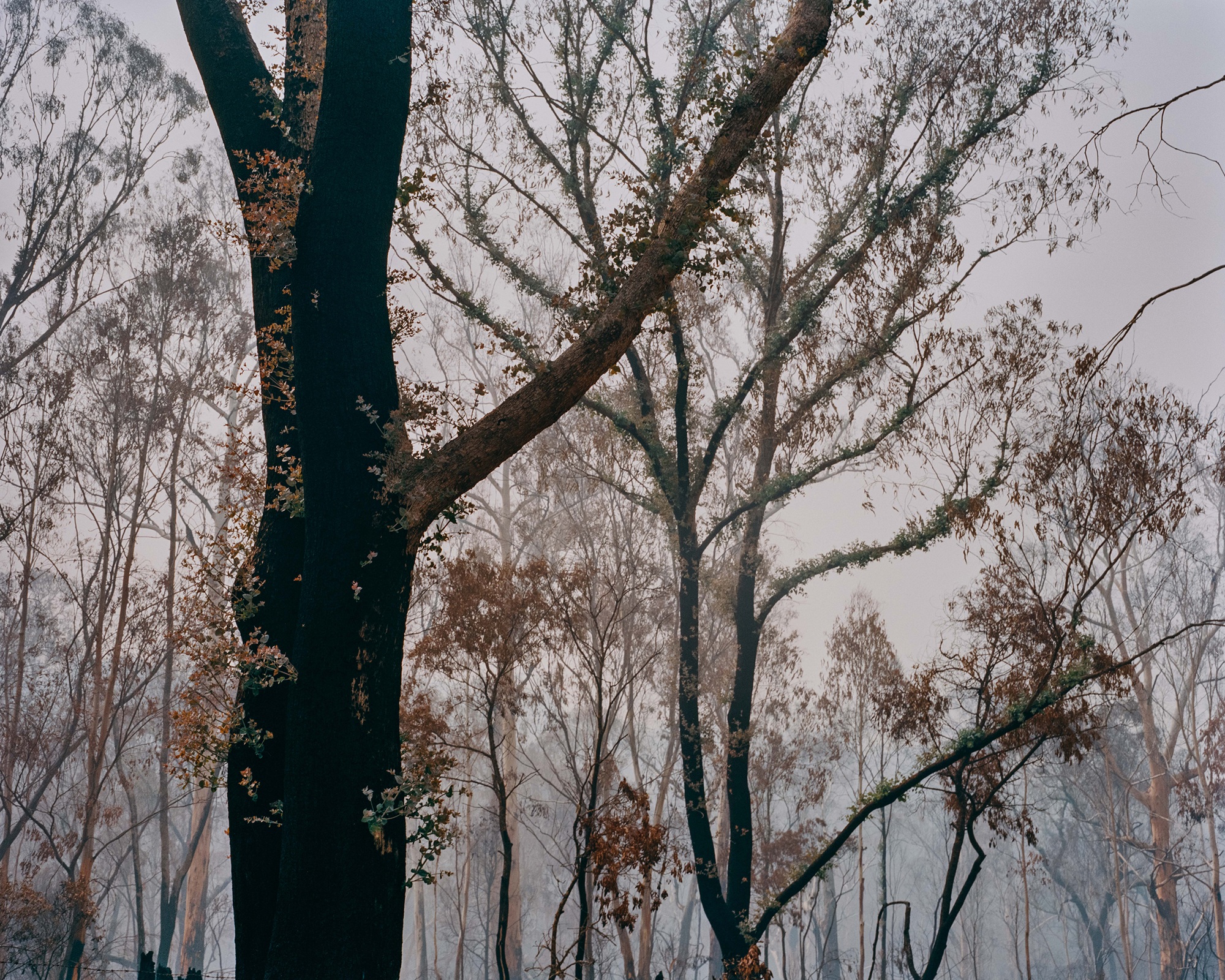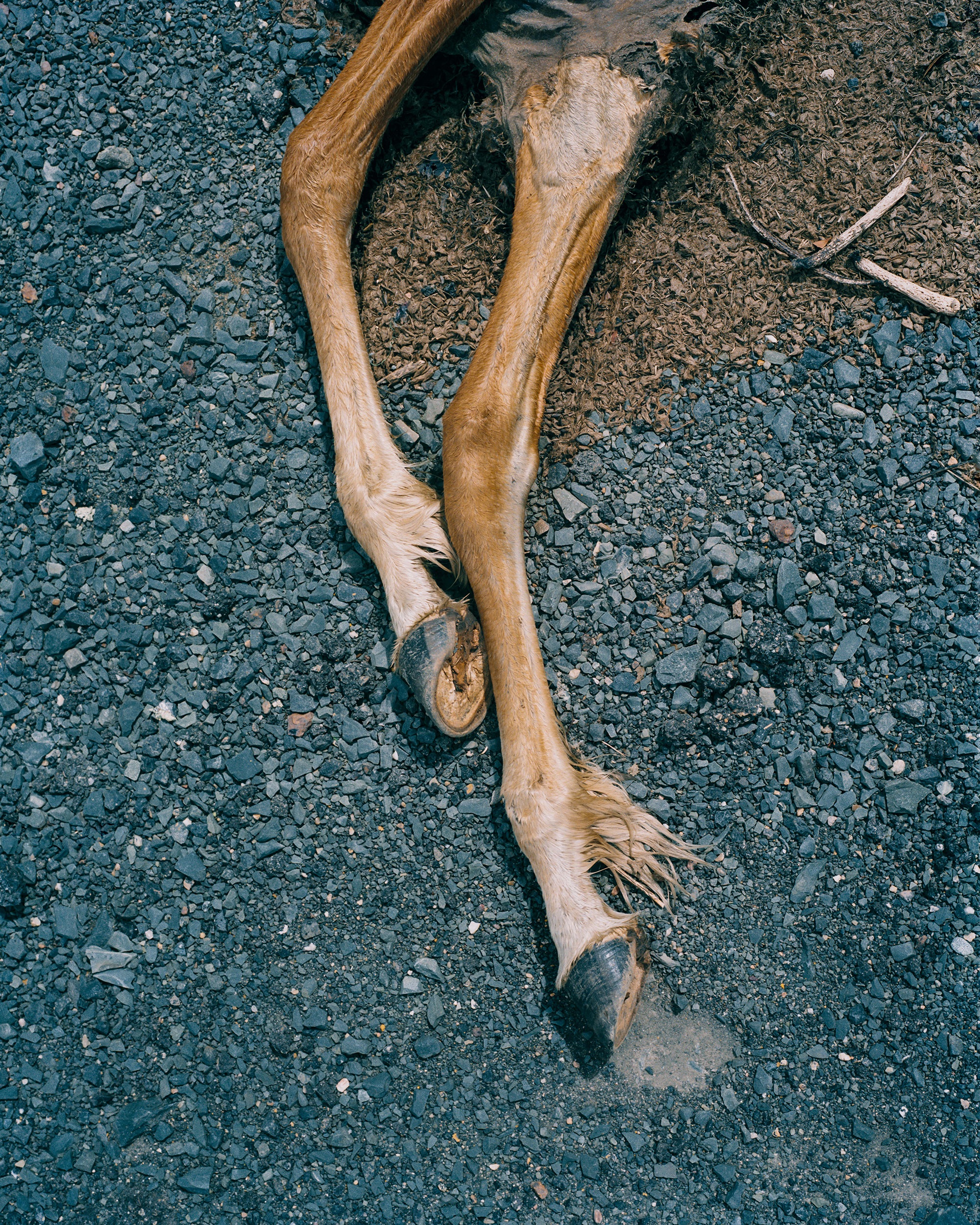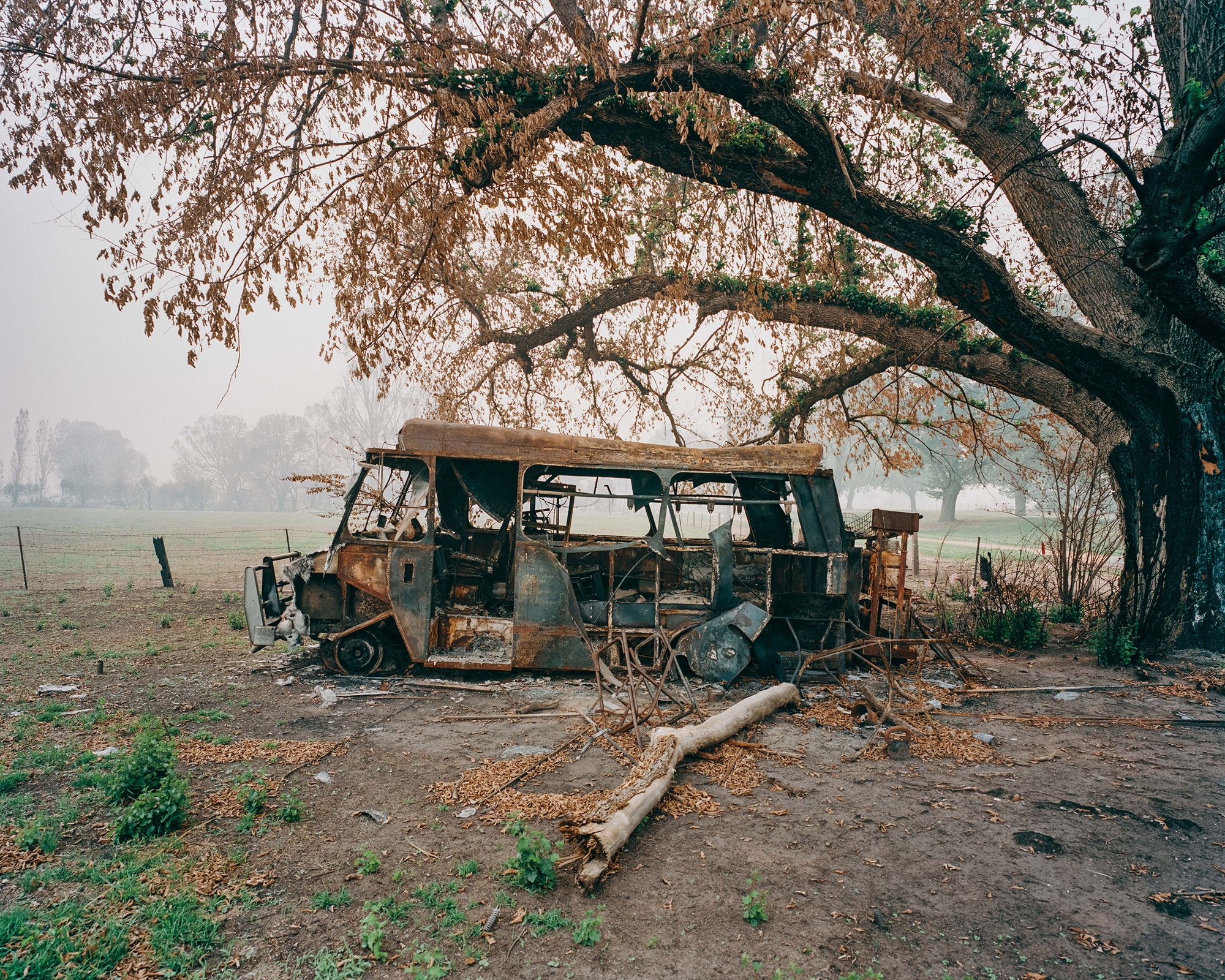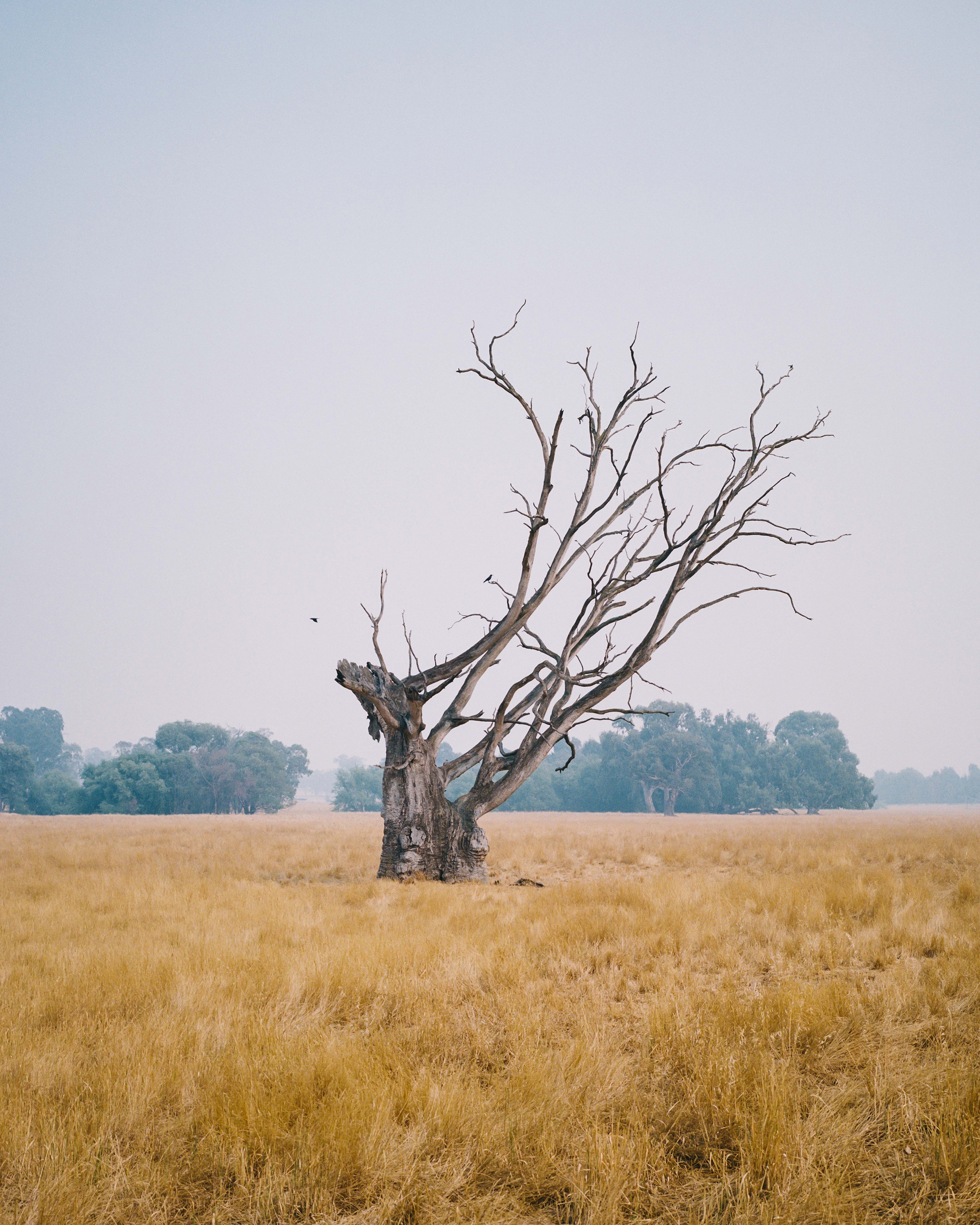Tom Goldner – Do Brumbies Dream in Red?
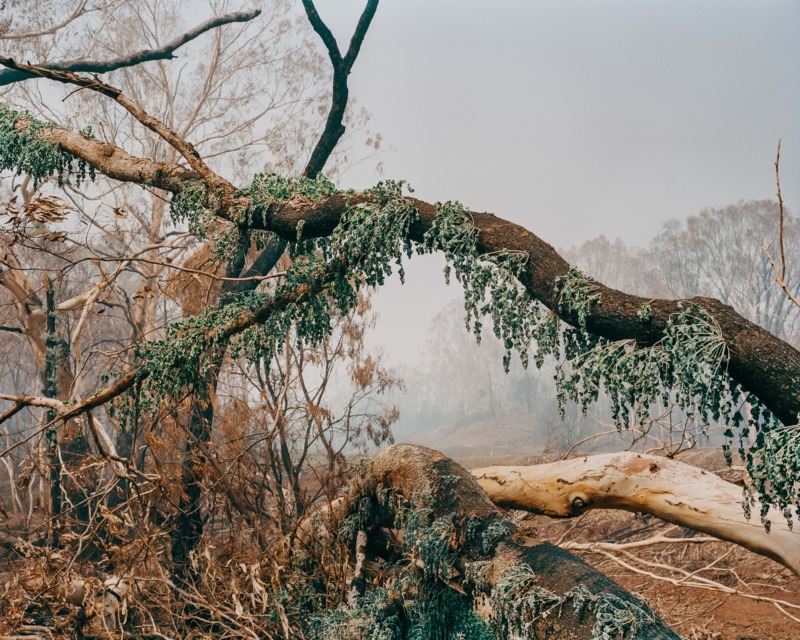
Australian artist Tom Goldner’s body of work Do Brumbies Dream in Red? is a haunting depiction of the slow yet unstoppable consequences of the climate crisis. It was presented to viewers in an immersive exhibition combining conceptual documentary photography, video and sound and an accompanying photobook. Shot laboriously between large and medium format over a 2-year period which encompassed Black Summer—the 2019-20 Australian bushfire season that saw fiercely intense bushfires rage across large parts of country and the arrival of COVID-19, both biting reminders that our days on this planet seem numbered.
Goldner’s images are disquieting, they allow us to traverse the desolate, burnt out scenes through the eyes of the contended brumby—an Australian feral horse, whose existence is set in a two-fold controversy. Firstly, due to their environmental impact which threatens native ecosystems, and secondly for their arrival to this land. They were introduced to Australia by colonialists, reminding us of the dispossession of Aboriginal land and attempted genocide of First Nations people in Australia through colonisation. The title of the work, Do Brumbies Dream in Red? is a reference to the brumbies inability to see the colour red and the artist’s wonderings of how these wild animals would have perceived the light and space around them during the raging fires.
We are now living under a new epoch label, the Anthropocene, from the Ancient Greek word Anthropos, meaning ‘human’, this shift at least acknowledges that humans are the major cause of the earth’s current transformation. In 2016 the Anthropocene Working Group agreed this is in fact separate from the Holocene and has a start date of the year 1950 when the Great Acceleration, a dramatic increase in human activity, really took off. But how can we pinpoint the moment in Earth’s history when our activity tipped the scales of impacting the planet’s climate and ecosystems?
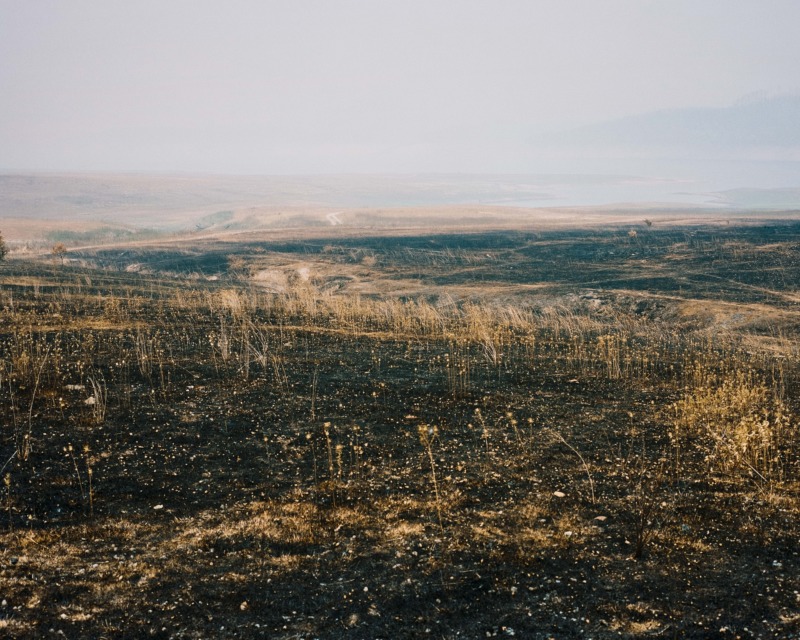
Regardless of the moment we choose, which has now in fact been chosen for us, the arguably most disturbing aspect to ponder about living under this new label, is the painful self-awareness which applies. As individuals we cannot abscond our participation, simply by being on the planet, we are contributing to the destruction of it, so we are condemned to live with this knowledge and guilt. Do Brumbies Dream in Red? acknowledges that although we are unable to excuse ourselves and step out from the contributing multitude, it allows us to take a look at a certain aspect of the destruction, in the Australian context, from the periphery, in the hopes of making the trauma more digestible.
The initial research for the project was heavily influenced by English eco-philosopher Timothy Morton, who coined the term ‘hyper-object’ which refers to a real event or phenomenon so vast that it is beyond human comprehension, such as the internet, or more relevant to this conversation, climate change. Goldner’s images and his approach to creating them recognize that slow-moving catastrophes need slow observation, the artist states “I wanted to elicit a slower response to the landscape and create images in a really considered way”.
Goldner began his production journey after months of research by exploring the area of central Queensland where the proposed Adani coal mine construction was taking place. He and Angus Scott, cinematographer on the project, travelled the region looking to capture the unseen aspects of climate change linked to mining. They always drove with the local radio on, collecting field recordings of news updates on the controversial mine plans, scooping up with it the crackles of patchy outback reception and a constant background hum of the coal loaded freight trains. At this time the bushfires across the country had been blazing for several months, but by November of 2019 they reached a peak never experienced before, and the pair decided after much deliberation it was necessary to visit those sites.
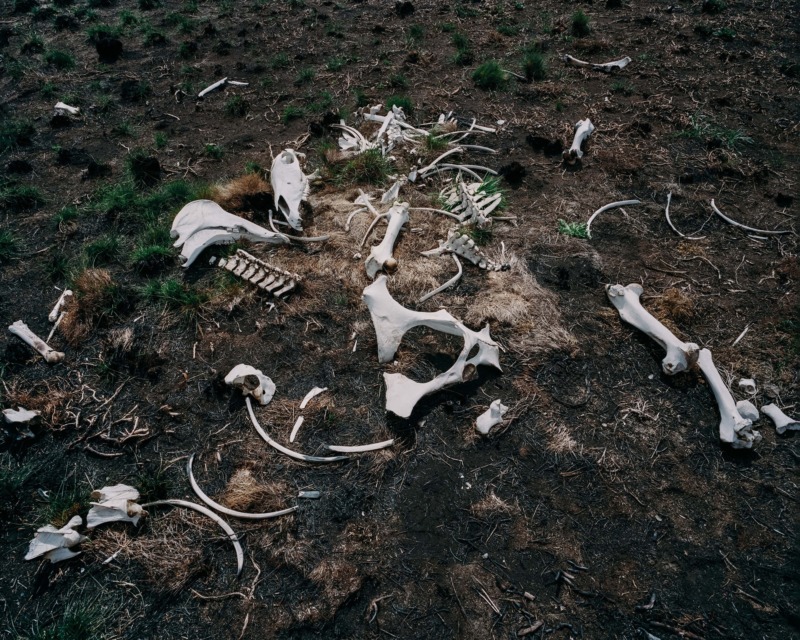
Goldner laments that it was a tough choice to make, conscious of not becoming a hindrance to any services working to fight the fires but also to be sensitive to families who had lost their homes and livelihoods. There were also reports of looters raiding abandoned homes and problems with ‘fire tourists’ wanting to come and snap selfies around the blazes. Goldner really questioned his position stating, “what is the line between being a tourist and being an artist when undertaking work like this. The camera is not a neutral tool, so you must assess your position in these situations.” He concluded that this was a critical part of not just his story, but of history, to capture. The duo focused on visiting national parks in order to stay out of the way of emergency services working around people’s homes, taking special care to navigate the roads and stay up to date on what was happening in the affected areas.
The book includes contributions from poet Judith Crispin, book designer Heidi Romano, and cover art from Katherina Rodrigues. The exhibition, held in 2021, combined Goldner’s photographs and art direction with collaborators input to the project which included Angus Scott and sound designer Sean Kenihan. The number of artists involved in the final outputs reflects Goldner’s belief that collaboration offers a broader perspective and gives more power than a singular voice can.
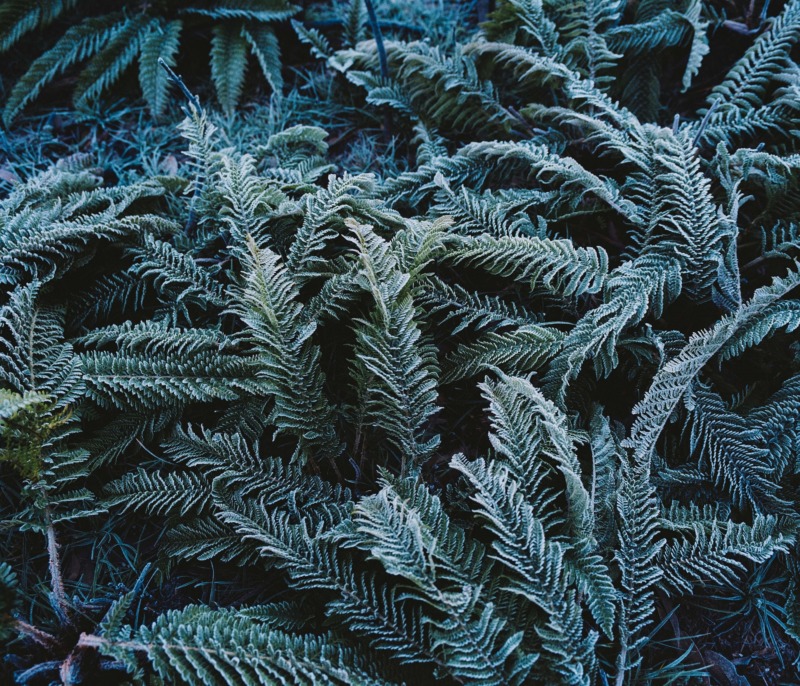
Building upon the soundscapes captured around the mines, Goldner clarifies how the role of the sound recordings, or lack thereof, took on new meaning from the firescapes. While shooting within a national park he recalls standing at a lookout point and feeling very strange, apart from being confronted by a sea of ash there was another layer he couldn’t quite put his finger on. Then he realized it was the absence of any sound that made this particular situation so jarring. With everything burnt, there was no noise from the wind, no branches to creak, no crickets, no birds, no insects—just absolute, damned silence.
The book embowers this sense of loss. Begging us to address the difficult feelings of destitution, death, destruction and our own seemingly inability to change anything. Enveloped by a black matte cover, through the book’s 120 pages we follow a subtly changing color palette from desolation to the final pages which lend us some hope at the first signs of regrowth. The A4 size presents the images individually, dedicating each photograph a space of its own to breathe and heal on the page. The publication has a black artboard cover with tipped on image, exposed binding and is available through the artists website. The exhibition offered an expansion on these sensibilities, upon entering the dark space, we are immediately surrounded by the slow, droning sounds of deep violin strings mixed with field recordings, the photographic images and almost motionless video shots projected onto large screens through which we navigate each section of the room. For me it was necessary to leave a few moments for the goosebumps to subside before turning to absorb a new image.
In Goldner’s words Do Brumbies Dream in Red? “seeks to flatten hierarchy between human and nonhuman life by allowing us to recognise ourselves within the violence we inflict on the natural world.” One is left to consider just how habitable will Australia be in the coming decades? No one knows what the future holds for the next generations, or how they will manage their resentment towards us for not doing what is necessary now.
